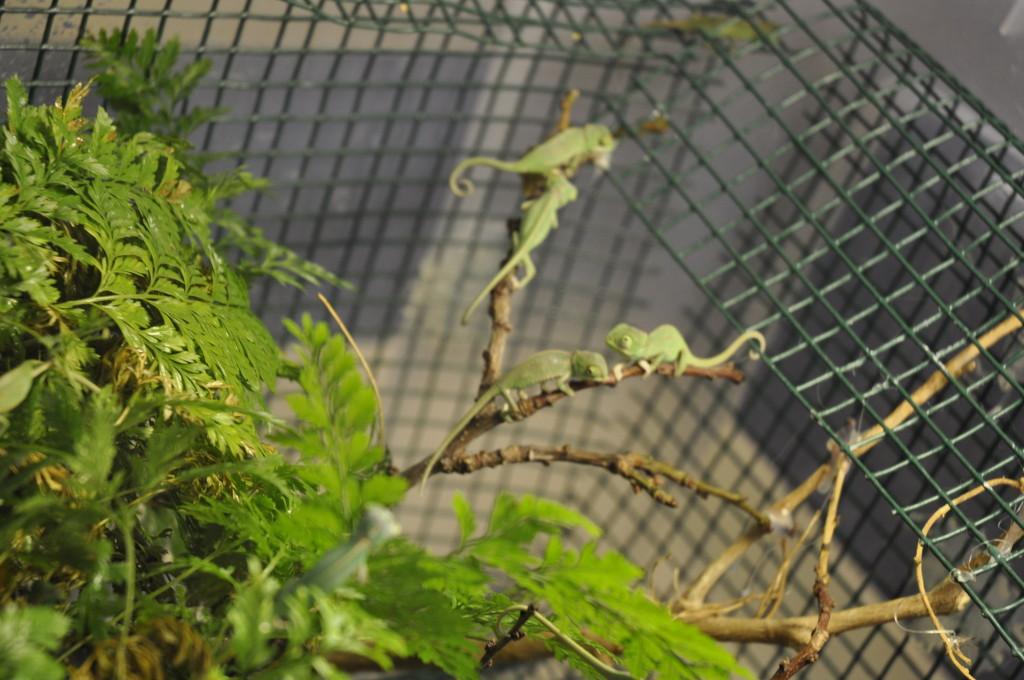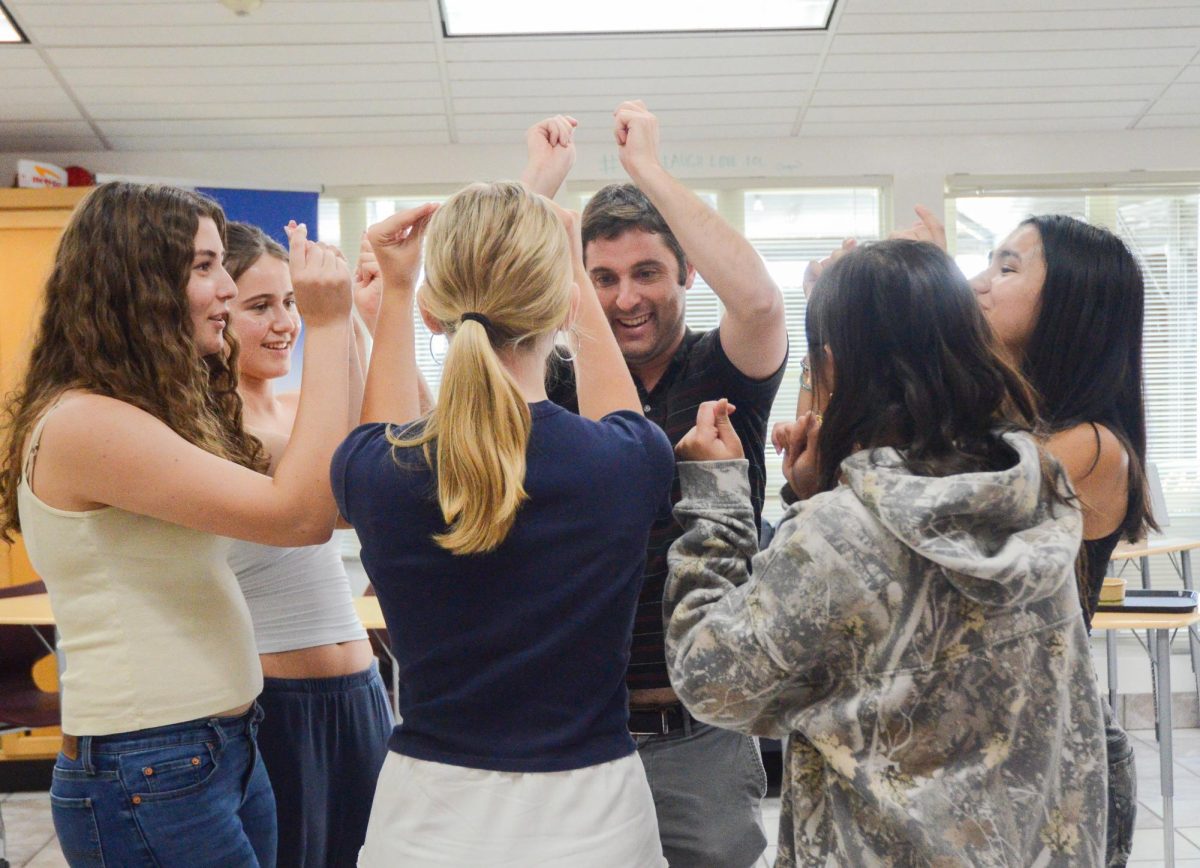Chemistry teacher Andrew Irvine’s chameleon hatched a group of 74 baby veiled chameleons, native to Yemen, and he is now caring for the 66 he still has.
A self-dubbed avid critter lover, Irvine has raised other small animals and lizards before he decided to hatch the large group of chameleon eggs.
Irvine bought the mother of his baby chameleons here in the Bay Area about three years ago and raised her until maturity. Once she had matured, he bought the father, another veiled chameleon, from a chameleon raiser in San Diego.
“The father displayed very unique traits, [such as] this spot on his head where there is no pigment. A completely albino chameleon is extremely rare and can be very expensive,” Irvine said.
Irvine was extremely excited to breed his chameleon with another that had such rare characteristics, and he was even more pleased that many of his baby chameleons displayed the same characteristics as their father.
Although he thinks the baby chameleons are very interesting creatures and fun to raise, they also require an abundance of time and work to look after. The chameleons have strange eating and drinking habits; they eat only crickets and drink water off the surface of plants.
They are a step up [for me] because they are very hard to raise and take care of,” Irvine said. “It’s a good thing I quickly found out they didn’t drink out of a bowl!”
The chameleons must also be kept under certain temperatures and light levels so they do not become sedentary and die.
From the original group of 74 eggs, two died, two have been given away to the science department, and four have escaped through a hole in the mesh of Irvine’s container into Irvine’s house, yet he still does not know where they are. He is hoping to keep three or four until they mature, and he plans to sell the rest or give them away to his friends.
Irvine hopes to buy panther chameleons in the future, but because of their extremely fickle behavior9602, he decided he is not ready to raise them quite yet.
“Panther chameleons display the most vivid colors and are the coolest [of the chameleons] but will stop eating and starve themselves if they are not under the perfect [conditions],” Irvine said.
Irvine’s chameleons are currently being kept in a small habitat in his room and are occasionally being shown off to his chemistry classes.


















![“[Building nerf blasters] became this outlet of creativity for me that hasn't been matched by anything else. The process [of] making a build complete to your desire is such a painstakingly difficult process, but I've had to learn from [the skills needed from] soldering to proper painting. There's so many different options for everything, if you think about it, it exists. The best part is [that] if it doesn't exist, you can build it yourself," Ishaan Parate said.](https://harkeraquila.com/wp-content/uploads/2022/08/DSC_8149-900x604.jpg)




![“When I came into high school, I was ready to be a follower. But DECA was a game changer for me. It helped me overcome my fear of public speaking, and it's played such a major role in who I've become today. To be able to successfully lead a chapter of 150 students, an officer team and be one of the upperclassmen I once really admired is something I'm [really] proud of,” Anvitha Tummala ('21) said.](https://harkeraquila.com/wp-content/uploads/2021/07/Screen-Shot-2021-07-25-at-9.50.05-AM-900x594.png)







![“I think getting up in the morning and having a sense of purpose [is exciting]. I think without a certain amount of drive, life is kind of obsolete and mundane, and I think having that every single day is what makes each day unique and kind of makes life exciting,” Neymika Jain (12) said.](https://harkeraquila.com/wp-content/uploads/2017/06/Screen-Shot-2017-06-03-at-4.54.16-PM.png)








![“My slogan is ‘slow feet, don’t eat, and I’m hungry.’ You need to run fast to get where you are–you aren't going to get those championships if you aren't fast,” Angel Cervantes (12) said. “I want to do well in school on my tests and in track and win championships for my team. I live by that, [and] I can do that anywhere: in the classroom or on the field.”](https://harkeraquila.com/wp-content/uploads/2018/06/DSC5146-900x601.jpg)
![“[Volleyball has] taught me how to fall correctly, and another thing it taught is that you don’t have to be the best at something to be good at it. If you just hit the ball in a smart way, then it still scores points and you’re good at it. You could be a background player and still make a much bigger impact on the team than you would think,” Anya Gert (’20) said.](https://harkeraquila.com/wp-content/uploads/2020/06/AnnaGert_JinTuan_HoHPhotoEdited-600x900.jpeg)

![“I'm not nearly there yet, but [my confidence has] definitely been getting better since I was pretty shy and timid coming into Harker my freshman year. I know that there's a lot of people that are really confident in what they do, and I really admire them. Everyone's so driven and that has really pushed me to kind of try to find my own place in high school and be more confident,” Alyssa Huang (’20) said.](https://harkeraquila.com/wp-content/uploads/2020/06/AlyssaHuang_EmilyChen_HoHPhoto-900x749.jpeg)










